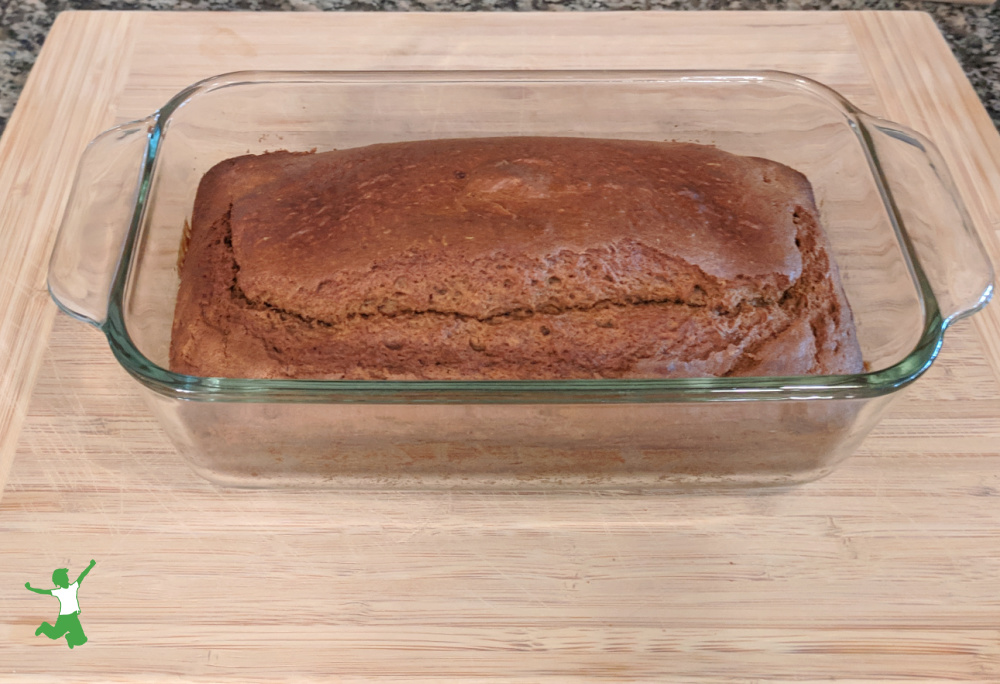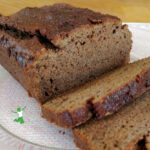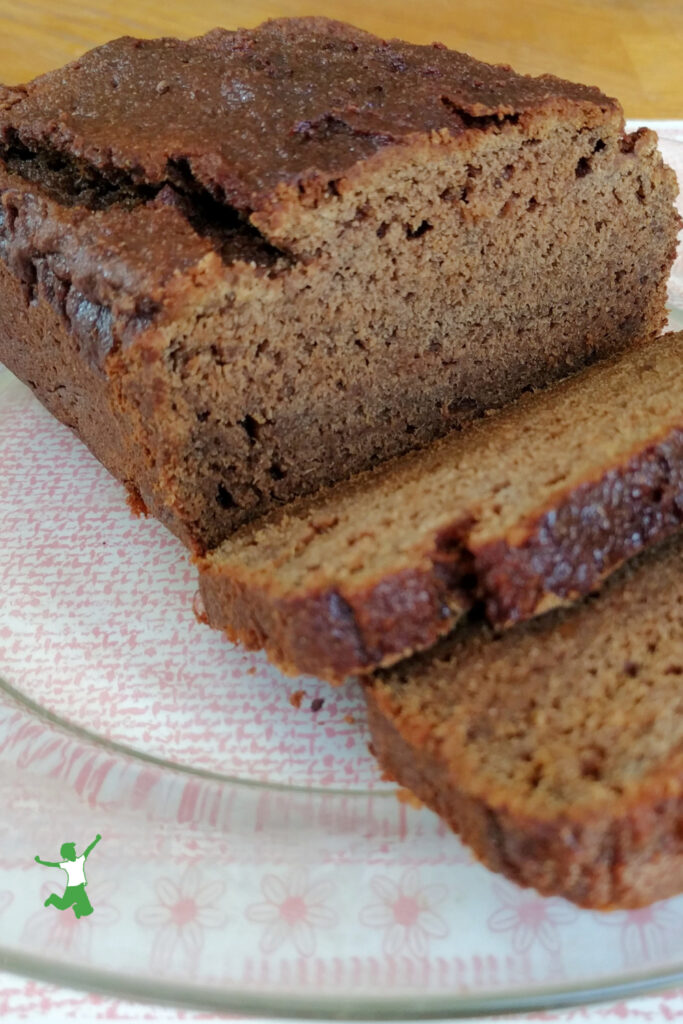A simple soaked sandwich bread recipe using kefir as the soaking medium that is light on the stomach, digestible, easy to make, soft, and delicious!

Making traditionally prepared bread by soaking flour overnight (as opposed to modern, difficult-to-digest yeasted bread) can be a bit tricky to master.
No one wants to waste quality ingredients not to mention precious time on failed attempts!
To make a long story short, it took me a little trial and error to get the recipe to work, but the results are awesome!
You can even slice the loaf for soaked sandwich bread!
*Note that the texture of soaked bread is quite a bit softer than sprouted or sourdough sandwich bread.
Please note that I only use einkorn flour to make this loaf, so if you want to try making it with another type of flour, it may take a couple of attempts to get it exactly right.
Why do I prefer einkorn as the best form of wheat?
Einkorn is the only form of nonhybridized wheat on the planet and contains good gluten (the kind many people are NOT allergic to!).
My friend Cathi who shared this recipe with me uses spelt flour. Based on our joint experience, it should work the very first try with either einkorn or spelt.
Other types of flour may take a bit of trial and error on your part to perfect.
Preparation Tips
Please note that you must soak the flour for this recipe using raw, homemade kefir made with live grains (not powdered starter).
**The dough does not rise as well if you soak the flour using raw yogurt, clabbered raw milk or buttermilk. The recipe also does not work well with plain store-bought kefir, likely because commercial versions are not fermented properly.
I recommend using unsprouted flour for this recipe. The texture turns out better. Sprouted flour is best reserved for recipes where the flour is not soaked.
Do not substitute raw honey instead of the sucanat as cooking honey is not healthy.
Once you’ve made your loaf, be sure to save the crusts! You can make homemade breadcrumbs with them!
If you love this soaked bread, try these other recipes that use soaked flour too!
- Soaked Devil’s Food Cake (yogurt works great for this recipe)
- How to Make Soaked Bread in a Bread Machine (any fermented dairy medium)
- Soaked Pancakes (dairy-free)

Soaked Sandwich Bread Recipe
Easy soaked bread recipe that can be sliced and used for sandwiches as well.
Ingredients
- 6 cups flour freshly ground einkorn or spelt recommended
- 3 cups raw kefir
- 2 Tbsp butter preferably grassfed and organic
- 1 1/2 Tbsp sucanat or organic brown cane sugar
- 1 1/2 tsp baking soda
Instructions
-
Mix 3 cups of flour and 3 cups of kefir well, cover with a clean cloth and let sit on the kitchen counter for 12-24 hours. After soaking, the dough should be liquid-y and very bubbly.
-
Add baking soda, sweetener, coconut oil or butter and 3 more cups of flour. Stick to 6 cups of flour and don’t add more even if tempted to do so based on consistency of the dough.
-
Mix well for 3-4 minutes. The resulting dough should be soft and easily workable with your hands.
-
Divide loaf into 2 … put in 2 buttered loaf pans (these are what I use) or make 1 huge loaf with a single large loaf pan.
-
Let the pan(s) sit lightly covered with a clean cloth for another 12 hours on the kitchen counter. The dough will rise nicely in the pan(s) so allow for enough room at the top or it will spill over the sides.
-
Bake at 350 ºF (177 ºC) for 30 minutes for 2 smaller loaves and 350 ºF (177 ºC) for 55 minutes for 1 large loaf of soaked bread. Check that a knife inserted in the center comes out clean to ensure that the bread is done.
-
Once cooled, slice into sandwich slices. Enjoy immediately and refrigerate what will not be used up within 24 hours.









I make bread with homemade kefir that is made from regular milk, as raw milk isn’t easy to get around here. It will make bread rise.
Has anyone tried Hard Red Wheat berries with this recipe?
Why a quick bread versus a yeast bread?
This recipe makes FABULOUS bread! I tried it today for the first time (well, I started yesterday). The second rise (in the loaf pans) only took 7 hours. The bread is so soft, the texture is perfect, and it tastes delicious!
Could this recipe be halved? I don’t usually have 3 cups of raw kefir at a time, and at $10 a gallon/week my raw milk only goes so far. And what are the differences in health benefits between this and sourdough? Thanks!
I have been making this bread since November, about once a fortnight and find it simple and very satisfactory.In fact it almost takes longer to butter the bread tins than anything else! I have adapted some quantities of the additions though NOT the quantity of flour and raw milk Kefir. I reduce the sugar to 1 tsp or omit it altogether.Reduce the baking soda to 1 tsp and add 1 tsp salt. Also I have recently started adding 2 tsps of Seagreens, an organic wild seaweed product, for the minerals and trace elements it contains.
As to flour types – I have mostly used Einkorn, Spelt or a mix of the two. But there seems to be a shortage of white Spelt in the UK at present so the last time I made it I used half Einkorn and half Canadian strong white bread flour and it still worked. I like making this recipe with half wholemeal and half white flour.
I think the reason kefir would so much different than yogurt or other substitute for fermenting in this recipe is because kefir contains yeast AND bacteria, and yogurt does not contain yeast only lacto-fermenting bacteria, so while it would culture the wheat it would probably not raise it. Just something to consider. I look forward to trying this sometime when I have dairy kefir again.
Do you have a recipe for Spelt bread that could be used for sandwiches? I’ve tried it several times but the bread would always collapse in the oven.
<3
Hi Sarah, Thank you so much for all your recipes and videos. They have been so helpful in adapting to the WAPF way of eating. In my search for dinner rolls/bread made with kefir soaked flour, I came across this article on http://www.traditional-foods.com and I was wondering your opinion on it. This is only part of the article.
The Devil In The Soaking
There is over 80 years of research now in university libraries on the topic of reducing phytic acid in grains. The literature is voluminous. One problem with scientific literature this big and non-experts (like me) taking a peek into them is that we do not always have the bigger picture while we are peeking.
It is true that an acid medium will break down phytic acid – the acidity of the soaking medium is one of the key factors in reducing phytic acid.
What we have not appreciated is that not all acidic soaking media are equal. In fact, I did not really discover this issue until I started delving more deeply into the issue of iron for the iron rich foods website. Iron interacts with calcium and so I became interested in how calcium in bread dough affects iron absorption.
It turns out that calcium in dough does affect iron absorption but it also impacts the break down of phytic acid. If you add a calcium food (such as milk, yogurt. kefir, whey, or buttermilk) to your dough or your soaking breakfast cereal, you may actually be inhibiting the breakdown of phytic acid or at least not encouraging the breakdown. (Check out one study.)
(If you have made your children eat soggy soaked bread or sour oatmeal I want you to walk into your kitchen right now and get a beer. Go on.)
Soaking flour does work and soaking in an acidic medium is optimal for the break down of phytic acid. However, adding yogurt, kefir, or whey to your soaked flour is actually worse than soaking the flour in plain warm water because of the calcium content of those foods.
My point in telling you this is to set you free from recipes you do not like that you are trying to make work in your kitchen.
There are many ways to skin the proverbial phytic acid cat and those ways are easier and taste better. This is really great news for our kitchens.
So are you suggesting we don’t eat calcium containing foods because it will interfere with iron absorption? Seems pretty drastic.